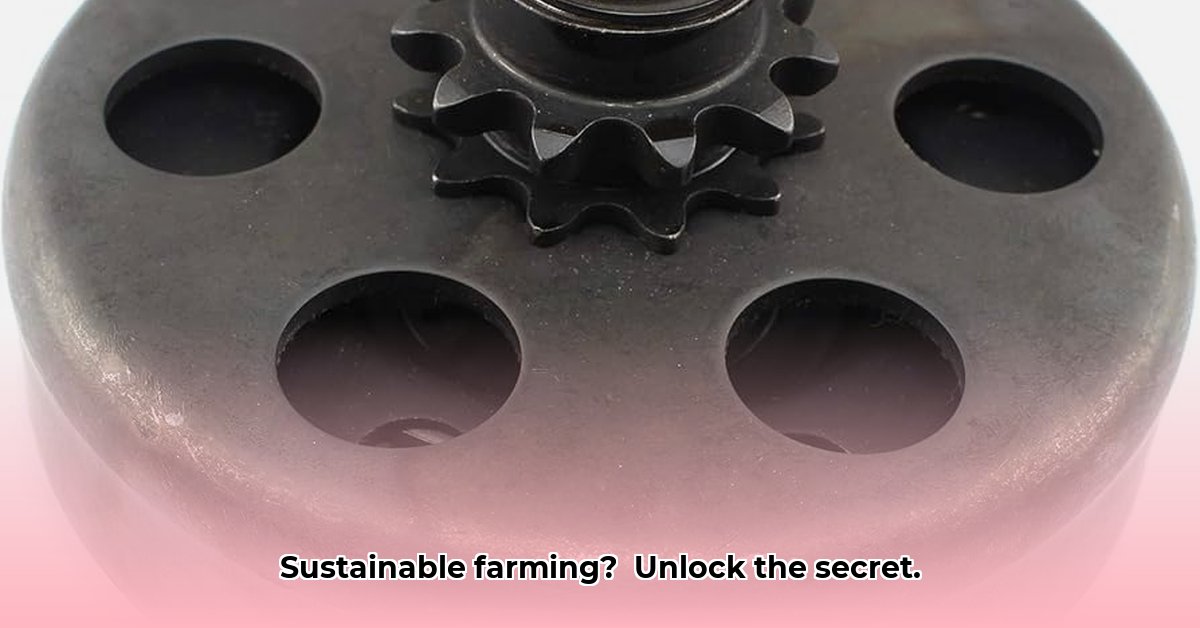
Understanding Centrifugal Clutches for Sustainable Agriculture
Choosing the right equipment is crucial for efficient and sustainable farming. Tractor supply centrifugal clutches are unsung heroes, offering a blend of power and efficiency that benefits both your bottom line and the environment. This guide will walk you through how these devices work, how to select and maintain them, and how they contribute to sustainable practices. For more tractor accessory options, check out this helpful resource: Tractor Accessories.
How Centrifugal Clutches Work
A centrifugal clutch acts as a smooth, automatic connection between your tractor's power take-off (PTO) and implements like tillers or balers. Unlike a traditional clutch's jarring engagement, it uses centrifugal force (the outward push you feel on a spinning ride) to gradually couple the PTO and implement. As the PTO spins faster, weights inside the clutch move outward, increasing the grip and power transfer. The PTO's speed dictates engagement strength. When the PTO slows, the weights retract, disengaging automatically.
Types of Centrifugal Clutches and Their Selection
Several centrifugal clutch designs exist, each with advantages and disadvantages. Some use multiple "shoes" (the gripping parts) for higher torque demands; others have different spring designs, adjusting engagement speed to match specific implements. Shoe material varies, impacting temperature resistance and wear. Choosing the right type depends on your tractor's PTO horsepower and the implements used. Heavy-duty implements need more robust clutches than lighter ones.
Consider these factors when selecting:
- Tractor PTO Horsepower: The clutch must comfortably handle your tractor's power.
- Implement Requirements: Different implements need varying torque.
- Duty Cycle: Intense use demands a more robust model than occasional light work.
Manufacturers provide specifications to guide your choice. Matching these to your tractor and implements prevents issues and maximizes clutch lifespan.
Installing and Maintaining Centrifugal Clutches
Installation varies by model and tractor but usually involves straightforward mechanical procedures. Consult the manufacturer's instructions. Safety first – always disconnect the PTO and follow safety procedures.
Routine Maintenance is Crucial:
- Regular Inspections: Inspect for wear on friction material, cracks, and unusual noises.
- Spring Tension: Ensure springs maintain proper tension; replace if weak or broken.
- Lubrication: Lubricate moving parts as recommended, avoiding over-lubrication.
- Cleanliness: Regularly clean the assembly to prevent dirt interference.
Troubleshooting Common Issues:
| Problem | Possible Causes | Troubleshooting Steps |
|---|---|---|
| Clutch Slippage | Worn friction material, weak springs | Replace friction material, check/replace springs |
| No Engagement | Broken parts, obstructions, incorrect installation | Inspect for damage, remove obstructions, check installation |
| Excessive Noise | Worn bearings, loose fasteners | Check bearings, tighten fasteners, inspect components for damage |
Preventative maintenance is far cheaper than repairs.
Benefits of Centrifugal Clutches for Sustainable Agriculture
Centrifugal clutches contribute to sustainable farming through:
- Fuel Efficiency: Smooth engagement minimizes power loss, reducing fuel consumption.
- Reduced Wear and Tear: Gentle engagement reduces wear on tractor components and implements, extending their lifespan and lowering maintenance costs.
- Enhanced Productivity: Smooth operation improves control and implement performance, leading to increased efficiency.
- Cost Savings: Lower fuel consumption, reduced repairs, and longer equipment life translate to significant cost savings.
These benefits contribute to both economic and environmental sustainability, making them a smart investment for the environmentally conscious farmer.
Calculating the Return on Investment (ROI) for Centrifugal Clutches
While the environmental benefits are compelling, a strong ROI is equally critical. To determine the financial viability of investing in a centrifugal clutch, consider the following:
- Initial Investment: This includes the clutch's purchase price, installation costs, and any specialized tools.
- Operating Cost Savings: Quantify the reduction in fuel consumption due to improved efficiency. Track fuel usage before and after installation.
- Reduced Maintenance Costs: Document the reduction in maintenance and repair expenses for the tractor's PTO and transmission, and the attached implements.
- Extended Equipment Lifespan: Estimate the extended life of your tractor components and implements based on reduced wear and tear.
- ROI Calculation: A simple calculation is: (Total Savings - Total Costs) / Total Costs * 100%.
Remember, this is a simplified model. A more comprehensive analysis might include factors like labor costs and potential increases in production efficiency. However, even this basic calculation should illustrate the clear financial benefits of increased equipment longevity, coupled with reduced fuel consumption.
Conclusion
Tractor supply centrifugal clutches are a valuable technology for sustainable and efficient farming. Understanding their operation, selecting the correct type, and performing routine maintenance will maximize their benefits, leading to improved profitability and environmental responsibility. The financial gains, combined with the eco-conscious advantages, make these clutches a sound investment for modern agriculture.